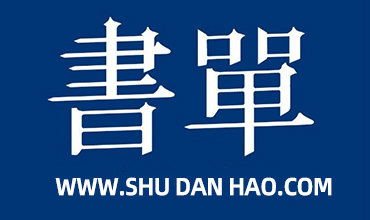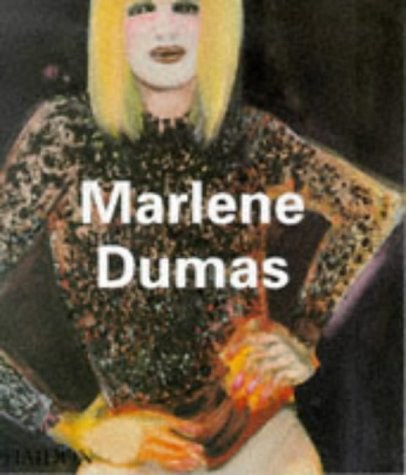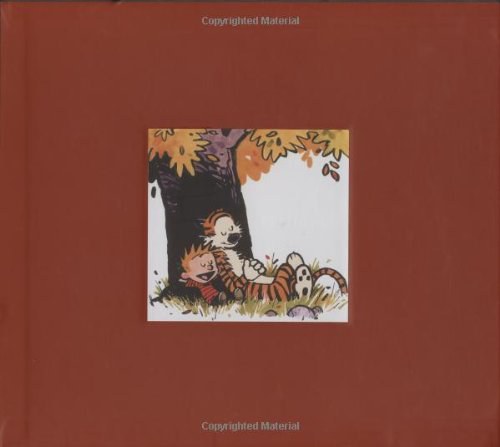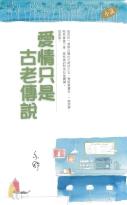
随州市博物馆《随州擂鼓墩二号墓》
书刊介绍
内容简介
《随州擂鼓墩二号墓》主要内容:The Tomb No.2 at Leigudun in Suizhou (Abstract) The tomb No. 2 at Leigudun (on a mound in Zengdu district, 2 kilometers northwest to the city proper of Suizhou) is the second largest tomb after the well-known tomb of the Marquise of Zeng, i.e., the tomb No.1 at Leigudun. Both of the tombs are located in Suizhou and belong to the members of the ruling lineage of the Zeng polity. It is believed by archaeologists that the two tombs are of equal significance in providing important evidence for understanding of the Sui culture, ritual practices and musical performances in the pre-Qin times, and the relationships between the Sui and Chu polities. The present volume reports the discovery and excavation of the tomb No.2 at Leigudun. It includes 449 burial goods of various kinds, and 32 are unearthed from a disturbing ditch. Date of the tomb and the social status of the occupant are both given in detail in the textual sections. Though the tomb No.2 was actually excavated very early, the site report only comes out as late as 2008 for many reasons. We would particularly like to thank the people who worked very hard in the past several decades keeping and conserving the materials for their publication.
The report has four chapters.
Chapter I Introduction
The first section introduces the geographic location of Suizhou, environmental and political changes since the late Western Zhou dynasty. Section one also includes the situation of the cemetery where the tomb No. 2 is located, conservation and reconstruction of the finds, and material preparation for publication.
Suizhou is located in the so-called Sui-Zao 'corridor', a narrow joint area of the south and north parts of China, with beautiful landscapes, comfortable climate conditions and fertile soil for agricultural use and densely veined with rivers; for all the above mentioned geographic and natural conditions, the city has always been perceived since the antiquity as an ideal and important location for human living and cultural communication between the south and the north of China. The Sui polity was established in the late Western Zhou period. During the early Spring and Autumn period, it moved its capital to the Sui-Zao corridor area and subsequently became a powerful polity on the east bank of the Hanshui River.
Chapter II Tombs and the Major Occupant
Data of the tomb No.2 includes four aspects: burial mound, burial pit, furnishings, and treatments of the dead.
1. There was indeed a mound right above the burial chamber of the tomb No.2 at Leigudun, which was totally leveled to the ground by the local military force when building a camp;
2. The second part introduces the location, orientation, size, structure, and the fill of the burial pit;
3. The third part introduces the major coffin and subordinate coffins; the coffin of the tomb occupant is located in the middle of the northern part of the burial chamber, seriously deteriorated; coffin accessories are scattered around; remains of another coffin, probably a subordinate coffin to the major coffin, was discov-ered in the southwestern comer of the chamber, with no burial goods inside;
4. The skeletal data is quite limited since the bones are highly deteriorated; what we can know from the bones left is that the major occupant was headed to the east, while the sacrificed victim in the accompanying coffin was buried in a north-south orientation.
Chapter III Burial Goods
Very abundant burial goods (in total, 449 single objects) have been recovered from the tomb No.2,including bronzes, stone and jade objects, pottery vessels, horn and glass objects, shell ornaments, and lead and tin vessels. According to function, they can be classified into mainly six categories, i.e., ritual vessels,musical instruments, life tools, horse and chariot fittings, adornments, and burial goods.
(1) Bronzes
Ritual vessels include: 17 ding (meat-stewing tripod), 8 gui (grain-offering vessel), 4fu (round vessel with flat bowl on high openwork foot), 10 li (tripodal cooking vessel with pouch-shaped feet), 1 yan (grain steamer), 4 zun (liquid-serving vessel), 2 washing pots, 4 pots, 3 dou (stem bowl), 1 fu (vessel with globular bottom, made to fit a stovetop), 1 dish, 1 yi (pouring vessel), 3 bi (pointed spoon), and 1 dou (ladle with cylindrical container);
Musical instruments include: 36 yongzhong bells, 1 drum stand, 22 hooks for hanging the bells;
Life tools include: 1 fire-pan, 1 dustpan, 1 lid, 1 hook-shaped implement, and 1 funnel;
Horse and chariot fittings and ornaments include: 4 canopy mounts, 5 axle-end ornaments, 6 horse bits,16 reign controllers, 102 bridle ornaments, 11 bicha, 36 bird-shaped and 18 plank-shaped adornments.
(2) Jade and stone burial goods
Ritual objects include: 1 bi (ring-shaped disc), and 1 gui (pentagonal tablet);
Musical instruments include: 12 chimestones;
Ornaments include: 2 arc-shaped pendants, and 8 agate rings;
(3) Ceramic vessels: 7 dou
(4) Lead and tin objects include 64 fish-shaped ornaments, and 15 coffin accessories;
(5) Other significant finds include 7 horn gig-bits, a pair of deer antlers, 3 crystal beads, 1 string of ring-shaped beads, and 1 shell ornament.
The tomb was most likely to have been looted in antiquity, which is corroborated by the co-occurrence of the disturbing ditch near the coffin of the major occupant and the large amount of burial goods seemingly left by the looters within the ditch by churning the tomb soil. It is for this reason, we deliberately separate these finds from those unearthed from within the tomb chamber.
The 32 finds from the ditch include 1 pottery dou, 1 stone bi, 1 jade ram figurine, 1 jade rabbit figurine,1 jade plug, 20 glass beads, 5 perforated turquoise beads, and 1 spade-shaped iron object.
All these finds are introduced in a typological order. One sample is selectively given when many typologically identical vessels are found.
Chapter IV Conclusions
The last section of this report includes the following research results:
(1) Date of the tomb No.2 at Leigudun: late phase of the early Warring States period through the early phase of the middle Warring States period;
(2) Identity of the major tomb occupant: another Marquise of the Zeng polity after the famous Marquise Yi;
(3) Though the finds reflect a serious influence from the Chu culture, the major elements of the mortuary practice belong to the Zeng cultural sphere.
相关推荐
-

古埃及艺术-如数家珍-了如指掌
古埃及艺术-如数家珍-了如指掌 本书特色 德国著名艺术出版社belser用近十年时间打造的常销艺术普及读物古埃及艺术-如数家珍-了如指掌 内容简介 如果说古埃及...
-

二十世纪书法经典:台静农
二十世纪书法经典:台静农 内容简介 《二十世纪书法经典:台静农》主要内容包括:秋明翁论书诗一首、七言诗一首、王介甫诗一首、临《爨龙颜碑》、七言诗一首、集《石门颂...
-

中国古代碑帖精选-魏碑摩崖刻石
中国古代碑帖精选-魏碑摩崖刻石 内容简介 在祖国书法艺术的发展史上,魏碑体占有重要的地位。魏碑是指我国南北朝时期的北朝(包括北魏、东魏、北齐、北周》刻石文字的总...
-

吴昌硕篆书心经-中华经典碑帖彩色放大本-四0
吴昌硕篆书心经-中华经典碑帖彩色放大本-四0 本书特色 吴昌硕,浙江安吉人,初名俊、俊卿,中年以后更字昌硕,亦署仓硕、苍石,别号缶庐、老缶、苦铁等,清末民初书画...
-

给大忙人的高效阅读课
《给大忙人的高效阅读课》内容简介:●罗辑思维前知识策划人、在行一点&十点课堂明星导师李源作品。●作为读书怪才和知识管理专家,
-

中国草书字典
中国草书字典 内容简介 《中国草书字典》共收入180个部首,部首次序基本按笔画数目多少排列。汉字书法是我国具有民族特点的传统艺术,它不仅有着悠久的历史,成为世界...
-

艺术的觉醒
作品目录异化现象近观....................................001漫谈异化..............................
-

20世纪中国艺术与艺术家
迈克尔·苏立文教授熟识1930年代到1940年代中国现代艺术运动中许多重要的中国艺术家,并且得到了1979年以来那些声名鹊起的年轻艺术家的信任。他是20 世纪中...
-

柯略素描静物临摹范本-教学视界大临本
柯略素描静物临摹范本-教学视界大临本 本书特色 《教学视界大临本——柯略素描静物临摹范本》一书主要包括素描静物的基础知识介绍、素描静物的作画步骤讲解和范例欣赏三...
-

敦煌马圈湾汉简书法(壹)/简帛书法大系
敦煌马圈湾汉简书法(壹)/简帛书法大系 本书特色 1979年《马圈湾汉简》的出土,除却其不可忽视的历史文献价值外,对研究书法的演变提供了极为有价值的一手资料。《...
-

浙江图书馆藏名人墨迹精选
浙江图书馆藏名人墨迹精选 本书特色 ★ 本书原由浙江图书馆选编,作为浙江古籍保护工程——古籍民国文献系列出版物之一,于2009年由中华书局出版发行,本次团购的版...
-

论电影艺术
论电影艺术 内容简介 本书是英国电 理 家林格伦所 的一部系统地 述电 艺术的作品。本书初版一经 世便引起电 界的广泛注意。作者扼要地介绍了 片的摄 组织、拍摄...
-

封面人物-娱乐大人物的真实与谎言
封面人物-娱乐大人物的真实与谎言 本书特色 《封面人物》是腾讯娱乐的一档深度人物栏目。聚焦娱乐领域值得关注的人物。他们是娱乐行业*核心的成就,他们身上有着无尽的...
-

观音百态
观音百态 本书特色 在当前的工艺美术界,依据传统人物雕刻的作品占据了很大的比例。行业内,很多艺人因专门从事雕刻传统人物或因专攻某一传统人物的雕刻名扬于世,从而弘...
-

魔法指印画
魔法指印画 本书特色 双手创意无限,指印画再升级!创作需要成就感,尤其要好玩!魔法指印画 内容简介 指印画因其具有简单和成功率高的特点,始终在涂绘世界中保持着热...
-

电影学院--电影编剧创作指南
电影学院--电影编剧创作指南 本书特色 北京电影学院剧作课程指定教材,好莱坞编剧教学大师悉德?菲尔德全球热门剧作丛书,畅销二十五年经典教程首部中文版带领你闯过创...
-

先秦印风
先秦印风 本书特色 这本《先秦印风》是《中国历代印风系列》丛书之一。收入了先秦时期几乎所有现存的印章的图谱。是一部翔实的资料库。对你学习篆刻艺术和研究篆刻的产生...
-
![江苏文化艺术精品展:[中英文本]](http://oss.shudanhao.com/caiji/zhongtu/2023/5027837.jpg)
江苏文化艺术精品展:[中英文本]
江苏文化艺术精品展:[中英文本] 内容简介 《江苏文化艺术精品集(中英文本)》内容主要包括:人文江苏的巨大魅力、吴韵汉风、南窑庄金器窖藏文物、错金银铜牛灯、青铜...
-

法律是什么(增订版)
《法律是什么(增订版)》内容简介:法律到底是什么?本书在介绍20世纪英美法理学的各种理论的同时,带领读者进行批判阅读,从理由
-

20世纪中国戏剧理论批评史
20世纪中国戏剧理论批评史 本书特色 ★ 16开精装,山东教育出版社出版★ 本套书曾获第35届华东地区优秀教育图书奖三等奖★ 本书为20世纪中国戏剧理论批评史勾...





